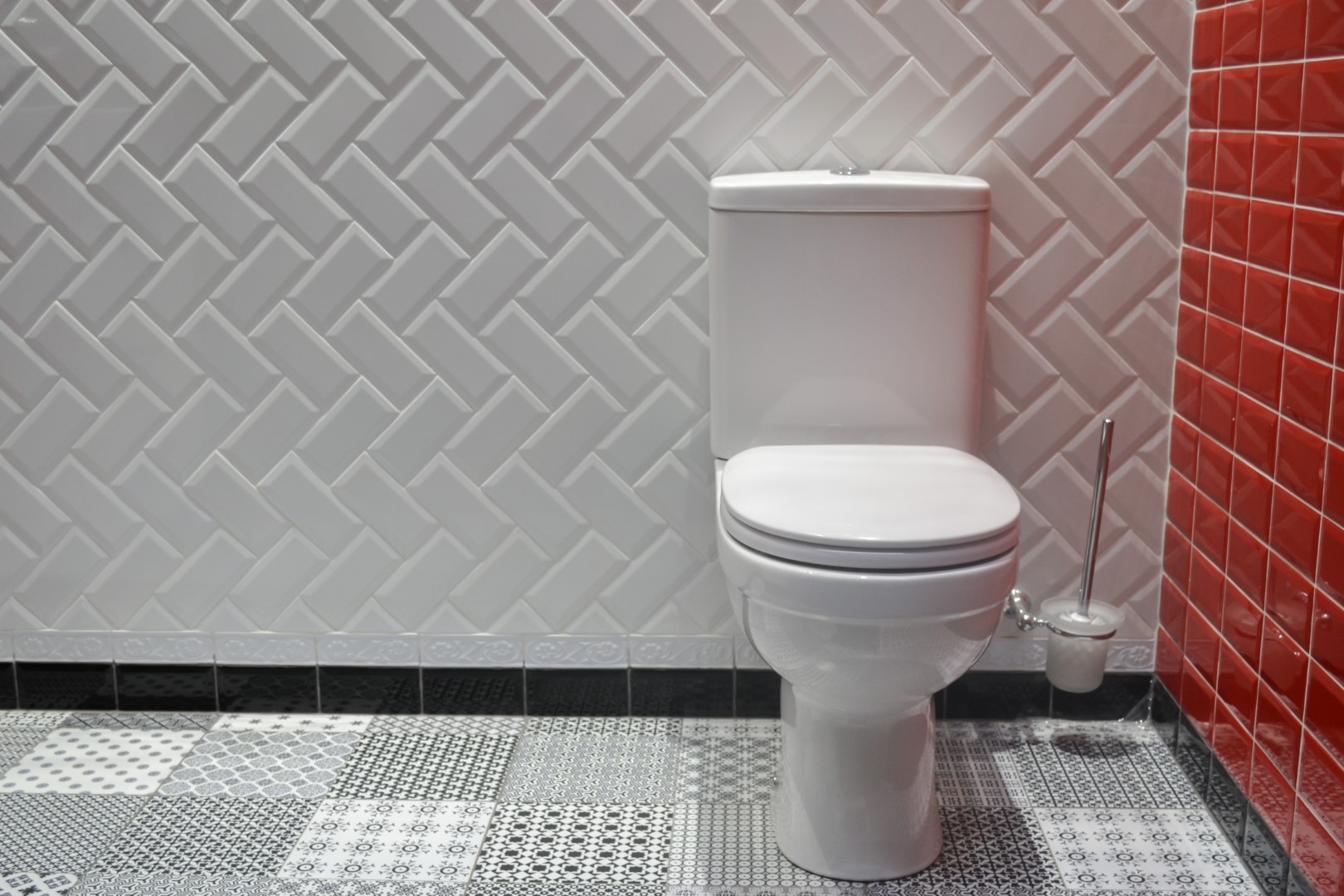Bathrooms serve as both sanctuaries for relaxation and hubs for daily routines. Imagine soaking in the tub after a long day, only to find water stubbornly pooling around your feet – not exactly the tranquillity you were hoping for. This is where the expertise of bathroom fitters becomes invaluable. Beyond just installing fixtures, they often emphasise the importance of a seamlessly functional drainage system.
A clogged bath drain, often a result of hair build-up, soap scum, or mineral deposits, can swiftly disrupt that peaceful ambiance. Addressing such issues promptly is more than just about convenience; it’s about preserving the essence of a well-constructed bathroom.
In this guide, we’ll navigate through the intricacies of diagnosing, rectifying, and preventing these pesky drain issues, ensuring your bathroom remains the haven it was designed to be.
How To Check If It’s Clogged
Determining if your bath drain is clogged requires a systematic approach. Simple observations can often diagnose the issue, ensuring you take the right measures for resolution. Here’s what you need to do.
- Fill the Bath. Begin by pouring water into the bath, enough to cover the drain.
- Observe Drainage. Monitor the water’s exit. If it drains slowly or remains stagnant, there’s a high likelihood of a clog.
- Listen for Blockages. Lean in and listen. A healthy drain emits a steady gurgling. Any interruption or inconsistency in this sound may indicate an obstruction.
- Physical Check. Use a flashlight to inspect the drain. Common culprits, such as clumps of hair or soap scum, can often be seen causing obstructions.
- The Suction Test. Press down over the drain. If you feel suction, it indicates a potential blockage restricting water flow.
- Check Nearby Fixtures. Activate adjacent fixtures. If they exhibit drainage issues or unusual noises, the problem might be more extensive.
- Odour Inspection. A foul odour emanating from the drain can be indicative of stagnant water or decomposing material, which suggests a blockage.
- Baking Soda & Vinegar Test. A mixture of baking soda followed by vinegar can reveal blockages. Fizzing indicates some water passage, while no reaction could signify a complete blockage.
Common Reasons Why Your Bath Doesn’t Drain
A relaxing bath can quickly turn frustrating when the water refuses to drain. Several factors might be at play. By understanding the common reasons, you can better diagnose and address the issue, ensuring a hassle-free bathing experience. Let’s explore these causes in-depth:
Hair and Dead Skin
Hair and dead skin cells are among the leading culprits behind clogged bath drains. Every shower or bath causes strands of hair to flow down the drain. Over time, these strands intertwine with dead skin cells, forming clumps that gradually reduce the drain’s diameter. The situation exacerbates when these clumps trap other particles, creating a dense web that obstructs water flow.
Soap Scum
Soap isn’t always as clean as it seems. Its residue, combined with minerals in hard water, forms soap scum. These sticky deposits cling to the sides of pipes, growing over time to create stubborn blockages. Not only does it reduce water flow, but the buildup also becomes a magnet for other debris, compounding the problem.
Dirt and Debris
While baths are meant to cleanse, the dirt, sand, and other debris washed off our bodies need to go somewhere. Especially after visits to the beach or dirty work outdoors, the residue can accumulate in the drain. Over time, this buildup can become significant enough to hinder proper drainage.
Mineral Buildup
Homes in areas with hard water often face issues of mineral deposits in their plumbing. Minerals like calcium and magnesium can precipitate, forming stubborn blockages that reduce the diameter of pipes and obstruct water flow.
Foreign Objects
Sometimes, the obstruction is more immediate. Dropping small items like jewelry, toy parts, washcloths, or even bottle caps can instantly block a drain. These objects might not fully obstruct flow initially, but they can trap other debris, creating a more significant blockage over time.
Pipe Issues
It’s easy to forget the unseen components of our drainage system. Beneath the surface, pipes can face issues that affect their efficiency. Corrosion can narrow the inner surface, while underground pipes might suffer from root intrusions from nearby trees. Furthermore, pipe misalignment, often due to house settling or poor installation, can create areas where water pools, leading to sluggish drainage.
7 Ways To Solve The Problem
Clogged bath drains are a universal annoyance, but fortunately, there are myriad solutions to tackle this pesky issue. Let’s delve into these methods in detail to help you get that water flowing smoothly once again:
Plunger Method
The trusty plunger, a staple in many households, isn’t just for toilets. It has saved many from the frustrations of a clogged drain. When using a plunger, it’s essential to create a tight seal around the drain. This seal ensures maximum suction, which can help dislodge blockages. Fill your bath with enough water to cover the rubber part of the plunger, position it over the drain, and use a vigorous pushing-pulling action. Repeat this a few times. This physical force can be highly effective in removing clogs, especially those caused by organic matter.
Natural Cleaners
Chemicals aren’t always the answer. Sometimes, nature provides just the solution you need. Baking soda and vinegar, for instance, can act as a potent combo against minor blockages. Start by pouring a cup of baking soda into the drain. Allow it to settle for a few minutes. Follow this up with an equal amount of vinegar. The resulting reaction, a fizzy effervescence, can work its way through the clog, breaking it down. For best results, let this mixture sit for about 30-60 minutes. Afterward, flush it down with a generous amount of hot water. This method is not only effective but also environmentally friendly.
Boiling Water
Sometimes, the simplest methods can be surprisingly effective. Boiling water can soften and break down many of the organic compounds causing blockages, such as soap scum or hair product residues. Slowly pour a kettle of boiling water down the drain, allowing the heat to melt away the obstructions. This method works best when done periodically as a preventive measure against potential clogs.
Chemical Drain Cleaners
For tougher blockages, you might be considering chemical drain cleaners. These products are formulated to eat through most clogs rapidly. However, they come with their set of precautions. Overusing chemical cleaners can lead to corroded pipes, and they aren’t exactly eco-friendly. Moreover, the fumes can be potent, so always ensure that the bathroom is well-ventilated when using these products. It’s essential to follow the manufacturer’s instructions to the letter and keep these products away from children and pets.
Drain Snake
The drain snake, or auger, is a go-to tool for many when faced with persistent blockages. It’s a long, flexible tool that you manually navigate deep into the drain. Once inserted, you twist the snake to entangle it with the blockage, and then, with a bit of luck and manoeuvring, you can pull the obstruction out. For those not squeamish, it’s oddly satisfying to see what’s been causing the water to stand still. Hair, combined with soap scum, is often the usual suspect.
Check the P-Trap
The P-Trap is the U-shaped pipe located beneath your bath drain. Its primary purpose is to trap debris, preventing deeper blockages in the main drainage system. However, over time, the P-Trap itself can become the blockage point. If you suspect this to be the case, place a bucket underneath the trap (to catch any water or debris), then unscrew or unfasten the P-Trap, depending on your plumbing setup. Once removed, it’s easy to spot and clear out any obstructions. Just remember to reattach it securely to prevent any leaks.
Professional Help
Despite our best efforts, some blockages prove too stubborn. When all DIY methods have been exhausted, it might be time to enlist professional help. Plumbers and bathroom specialists have access to the right tools and bring a wealth of experience to the table. They can pinpoint the exact cause of the blockage, whether it’s in the visible drain, the P-Trap, or even further down in the house’s plumbing system. Therefore, using the services of experts in the field can save time, effort, and further complications down the road.
How To Prevent Clogs In Your Bathroom
A smoothly flowing bathroom drain can easily be taken for granted, until the day it doesn’t. As the saying goes, “prevention is better than cure,” and this couldn’t be truer when it comes to bathroom maintenance. Adopting proactive measures can save you time, money, and the inconvenience of dealing with stubborn blockages. Let’s explore some of the best practices to keep your bathroom drains running freely.
Regular Cleaning
Consistency is crucial when it comes to bathroom maintenance. Dedicate a few minutes every week to clean and inspect your bath drain. By pouring a mixture of equal parts white vinegar and hot water down the drain, followed by boiling water, you can dissolve minor obstructions. This simple routine can prevent potential blockages, ensuring water flows freely and reducing the need for intensive unclogging methods. Remember, a little preventative action can save you from future hassles.
Use Drain Guards
Drain guards or strainers might seem like simple accessories, but they’re front-line defenders against clogs. By catching hair, soap particles, and other debris, they ensure these potential blockages don’t find their way down your drain. They’re easy to clean and replace, making them a worthwhile investment. Different styles and sizes are available, catering to various drain designs. Incorporating them into your bathroom is a small step with significant benefits.
Limit the Use of Oils
Bath oils can elevate the bathing experience, offering relaxation and skin benefits. However, they can also cling to pipe walls and combine with other debris, forming blockages. If you’re an avid bath oil user, consider switching to water-soluble variants. These formulations dissolve easily, reducing the risk of clogs. Alternatively, use oils sparingly, ensuring thorough rinsing post-bath.
Flush with Boiling Water
This age-old remedy is a powerful preventative measure. Boiling water can break down soap scum and other organic buildups, ensuring your pipes remain clear. Incorporate this into your weekly cleaning routine for best results.
Avoid Chemical-based Products
Certain bath products, especially those laden with chemicals, can leave residues that contribute to blockages. As a proactive measure, opt for natural or biodegradable alternatives. These products not only minimise clogging risks but are also environmentally friendly, ensuring your bathroom habits are sustainable.
Educate Family Members
Preventing bathroom clogs is a collective responsibility. Sit down with your family and discuss the importance of proper bathroom etiquette. Emphasise the items that shouldn’t find their way down the drain – from children’s toys to non-dissolvable wipes. By ensuring everyone understands the significance of these guidelines, you create a more harmonious, clog-free bathroom environment.
Wrapping Up
A clogged bath drain, while common, can be more than just an annoyance. By understanding the root causes and adopting preventive measures, many clogs can be avoided. And when they do occur, prompt action ensures minimal disruption. Remember, while DIY solutions are handy, don’t hesitate to call in professionals when necessary.
Discover more from Futurist Architecture
Subscribe to get the latest posts sent to your email.




